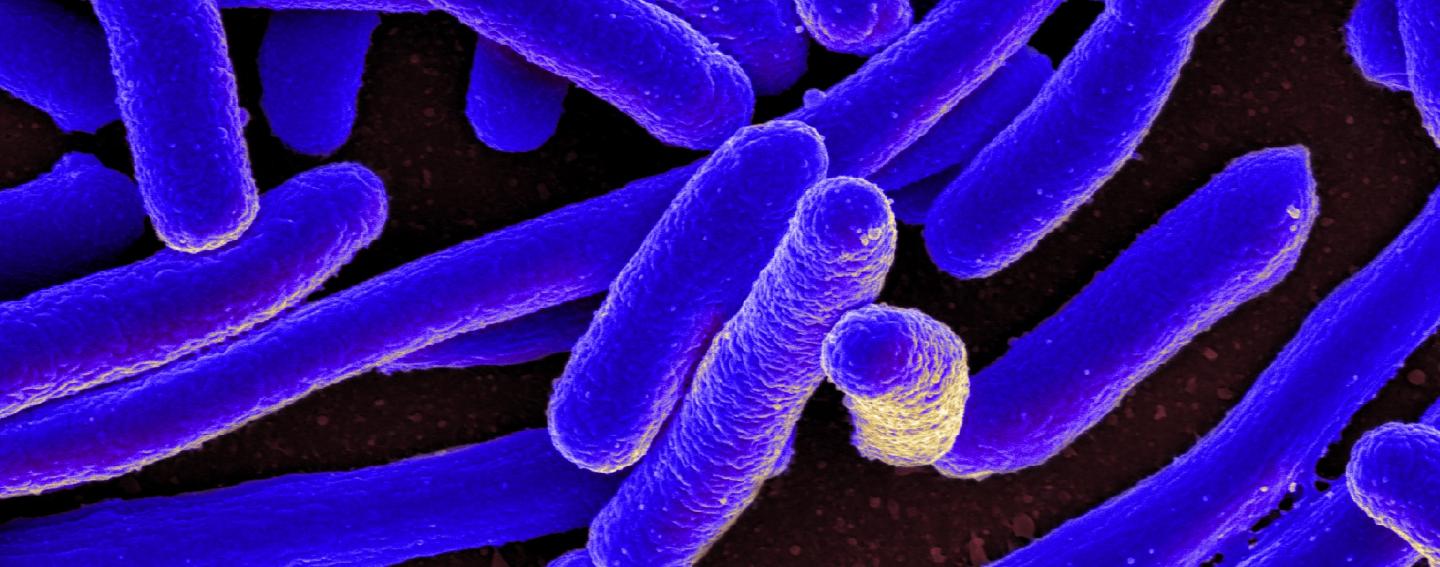Unique protein acts as an inward proton pump in a distant microbial relative

Credit: © 2020 IDKlab CC BY-SA 4.0
Researchers investigated the group of microorganisms classified as Asgard archaea, and found a protein in their membrane which acts as a miniature light-activated pump. The schizorhodopsin protein draws protons into the organisms’ body. This research could lead to new biomolecular tools to control the pH in cells or microorganisms, and possibly more.
Asgard archaea are relatively new to science, but they are ancient and important to us in more ways than one. They are single-celled organisms and were originally found at the bottom of the ocean. Asgard archaea are what are known as a prokaryote, they do not have a cell nucleus, yet despite this, they are genetically close to single-celled organisms called eukaryotes which do contain a cell nucleus. They are like a modern analogue of an ancient common ancestor.
The race is on to investigate these small but significant organisms. Associate Professor Keiichi Inoue from the Institute for Solid State Physics at the University of Tokyo, Professor Hideki Kandori from Nagoya Institute of Technology and their team chose to study a feature of Asgard archaea that although not unique to them, is especially interesting in their case, and that is light-sensitive or photoreceptive proteins called rhodopsins. The organisms live at the bottom of oceans and lakes so it’s surprising they need any kind of sensitivity to light.
“We explored the molecular function of special rhodopsins in Asgard archaea called schizorhodopsins and found that they acted as light-activated microscopic pumps,” explained Inoue. “Schizorhodopsin uses sunlight energy to take up a proton into the cell along a pathway inside the protein. Many prokaryotes such as bacteria and other archaea use rhodopsins to pump protons out, but we find this newly characterized form in Asgard archaea particularly interesting.”
As the scale this function occurs on is nanoscopic, sophisticated measurement techniques with high sensitivity and high temporal resolution were required. Inoue, Kandori and their team used a method called laser flash photolysis which uses pulsed laser light to stimulate reactions. Color change in the protein affected by laser light was monitored by sensitive sensors. These detected the presence and nature of the short-lived activation of schizorhodopsin.
“These findings will help us better understand proton and other ion transport mechanisms. In addition, schizorhodopsin could be made into a useful molecular tool for researchers,” commented Inoue. “For example in optogenetics, which is a new methodology to control various cellular phenomena with light. Schizorhodopsins could also be used to control the pH inside cells or microorganisms with light, as pH can be altered by changing the proton concentration.”
###
Journal article
Keiichi Inoue, Satoshi P. Tsunoda, Manish Singh, Sahoko Tomida, Shoko Hososhima, Masae Konno, Ryoko Nakamura, Hiroki Watanabe, Paul-Adrian Bulzu, Horia L. Banciu, Adrian-?tefan Andrei, Takayuki Uchihashi, Rohit Ghai, Oded Béjà, Hideki Kandori. Schizorhodopsins: A family of rhodopsins from Asgard archaea that function as light-driven inward H+ pumps. Science Advances. DOI: 10.1126/sciadv.aaz2441
This work was supported by the Japan Society for the Promotion of Science (JSPS) KAKENHI grant numbers JP16H02277, JP17K14536, and JP19K15628.
Inoue Laboratory – https:/
Institute for Solid State Physics – http://www.
Research Contacts
Associate Professor Keiichi Inoue
Institute for Solid State Physics, The University of Tokyo
5-1-5 Kashiwanoha, Kashiwa, Chiba 277-8581 JAPAN
Tel: +81-4-7136-3230 – Email: [email protected]
Professor Hideki Kandori
OptoBiol Technology Research Center, Nagoya Institute of Technology
Gokisocho, Showa-ku, Nagoya, Aichi 466-8555 JAPAN
Tel: +81-52-735-5207 – Email: [email protected]
Press Contacts
Ms. Madoka Mochida
Institute for Solid State Physics, The University of Tokyo
5-1-5 Kashiwanoha, Kashiwa, Chiba 277-8581 JAPAN
Email: [email protected]
Mr. Rohan Mehra
Division for Strategic Public Relations, The University of Tokyo
7-3-1 Hongo, Bunkyo-ku, Tokyo 113-8654, JAPAN
Tel: +81-3-5841-0876 – Email: [email protected]
About the University of Tokyo
The University of Tokyo is Japan’s leading university and one of the world’s top research universities. The vast research output of some 6,000 researchers is published in the world’s top journals across the arts and sciences. Our vibrant student body of around 15,000 undergraduate and 15,000 graduate students includes over 4,000 international students. Find out more at http://www.
Media Contact
Keiichi Inoue
[email protected]
Original Source
https:/
Related Journal Article
http://dx.





